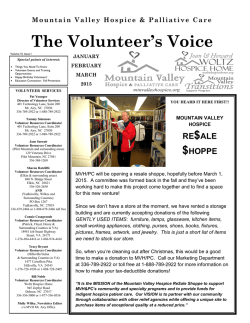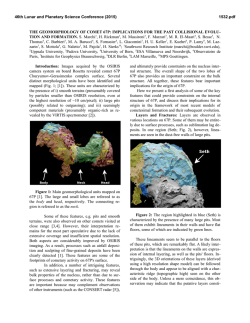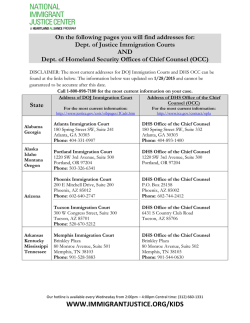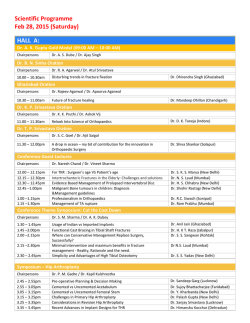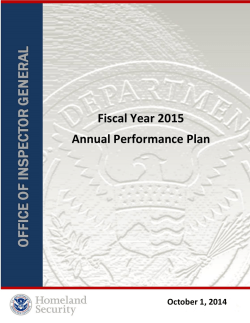
Download [ PDF ] - journal of evidence based medicine and
ORIGINAL ARTICLE
COMPARATIVE STUDY BETWEEN PROXIMAL FEMORAL NAILING
AND DYNAMIC HIP SCREW IN THE MANAGEMENT OF
INTERTROCHANTERIC FRACTURES OF FEMUR
Penugonda Ravi Shankar1, Vanga Anil2, Gangi Reddi Suresh Babu3, Seetham Raju Vidya Sagar4
HOW TO CITE THIS ARTICLE:
Penugonda Ravi Shankar, Vanga Anil, Gangi Reddi Suresh Babu, Seetham Raju Vidya Sagar. ”Comparative
study between proximal femoral nailing and dynamic Hip screw in the Management of Intertrochanteric
fractures of Femur”. Journal of Evidence based Medicine and Healthcare; Volume 2, Issue 5, February 2,
2015; Page: 541-548.
ABSTRACT: AIMS AND OBJECTIVES: To determine the rate of union, complications, operative
risks and functional outcomes in intertrochanteric fractures treated with DHS and PFN, To
compare the results obtained and To compare the effectiveness of DHS and PFN in treatment of
intertrochanteric fractures. RESULTS: In the present series of 24 cases of Intertrochanteric
fractures were treated by proximal femoral nailing and dynamic hip screw, 12 cases in each. Out
of 24 there were 13 male and 11 female. Minimum age was 36 years, maximum age 76 years
with mean age of 59.25 years. Slip and fall accounted for 75% of cases. BOYD and GRIFFIN type
II fracture accounted for 58.3% of cases. Mean duration of hospital stay was 26 days in both PFN
and DHS groups. Length of incision was small 5-6cm in PFN group compared to 10-12cm in DHS
group. Mean external blood loss 150ml in PFN group and 315 ml in DHS group. Mean time for full
weight bearing was 11.5 weeks for PFN group and 14.3 weeks for DHS group. Radiological union
was 12.3 weeks in PFN group and 15.5 weeks in DHS group. Good to excellent results were seen
in 91.7% of cases in PFN group and 75% in DHS group. CONCLUSION: From the study, we
consider PFN as better alternative to DHS in the treatment of intertrochanteric fractures but is
technically difficult procedure and requires more expertise compared to DHS.As learning curve of
PFN procedure is steep, with experience gained from each case operative time, radiation
exposure and intraoperative complications can be reduced in each case of PFN.
KEYWORDS: femur, subtrochanteric, intertrochanteric, proximal femoral nail, dynamic hip
screw, sliding hip screw.
INTRODUCTION: Fractures of proximal femur and hip are relatively common injuries in elderly
individuals, constituting 11.6% of total fractures. Of these intertrochanteric fractures constitute
53.4% with a female predominance (3:1).1 Intertrochanteric fractures are commonly seen in
patients over 60 years of age, mostly due to trivial trauma. Incidence has increased primarily due
to increasing life span and more sedentary lifestyle brought by urbanization.
In elderly 90% of intertrochanteric fractures result from simple falls, of these pathological
fractures constitute 1.3% of total fractures2. In younger population, Inter trochanteric fracture is
usually the result of high- energy injury, such as motor vehicle accident or fall from height.
This group of fractures form sizeable portion of admissions to trauma ward, their
management has created considerable interest in this century. Fortunately for these fractures
union is not a problem due to abundant blood supply, cancellous nature of bone and a wide cross
sectional area at fracture site3. All treatment modalities are aimed at preventing malunion and
deformity.
J of Evidence Based Med & Hlthcare, pISSN- 2349-2562, eISSN- 2349-2570/ Vol. 2/Issue 5/Feb 02, 2015
Page 541
ORIGINAL ARTICLE
Internal fixation of the intertrochanteric fracture with early mobilization is considered as
standard treatment. The only exception being a medically unstable patient, who has anaesthetic
and surgical risk.
Though conservative treatment yields good results but necessitates prolonged
immobilization of not less than two months duration with obvious economic implications, not to
mention the pin tract problems and the ills of enforced bed rest in the elderly, viz: bed sores,
deep vein thrombosis, fracture disease and pulmonary embolism. Another feature of conservative
regime is the possibility of varus drift and shortening in spite of adequate period of
immobilization. Therefore Surgery is the mainstay of treatment. The goal of treatment is fracture
reduction so that near anatomic alignment and normal femoral anteversion are obtained.4
Various internal fixation implants are available which includes which can be broadly
classified into intramedullary devices and extramedullary devices. Extramedullary device, such as
a 95-degree lag screw and side plate or blade plate. Intra medullary fixation include devices like
the IMHS (intra medullary hip screw), Gamma nail, Russell - Taylor reconstruction nail, ATN (Ante
grade trochanteric nail), TFN (Trochanter fixation nail) and the PFN (Proximal femoral nail).
This study consists of 24 cases of intertrochanteric fractures, selected randomly and
treated by PFN (intramedullary device) or DHS (extramedullary device) and comparison of their
clinical outcome.
MATERIALS AND METHODS: The present study consists of 24 elderly patients with
intertrochanteric fractures of femur who were treated with DHS or PFN in Department of
Orthopaedics S.V.R.R.G.G.H, Tirupati during the period of Oct. 2010 to Sept. 2012.
This study was carried out to study the results of intertrochanteric fractures treated with
DHS or PFN. All the 24 patients were followed up at regular interval. Inclusion Criteria included
Adult Patients with Boyd and griffin type II, III, IV trochanteric fractures. Exclusion Criteria
include, Open fractures, Pathological fractures, Pediatric fractures, Patients associated with
polytrauma.
As soon as the patient with suspected Intertrochanteric fracture was seen, necessary
clinical and radiological evaluation was done and admitted to ward after necessary resuscitation
and splintage with either skin or skeletal traction. All the routine investigations were done as
follows haemogram, blood urea, serum creatinine, urine routine, microscopy, blood sugar level,
serum electrolytes, blood group, HIV, HBsAg, HCV, Chest X-ray and ECG. All the patients were
evaluated for associated medical problems and were referred to respective department and
treated accordingly. Associated injuries were evaluated and treated simultaneously. The patients
were operated on selective basis after overcoming the avoidable anaesthetic risks.
End results were assessed based on Harris Hip Scoring System (Modified).4
RESULTS: The following observations were made from the data collected out of 24 cases of
intertrochanteric fractures were selected randomly and treated by Proximal Femoral Nail or
Dynamic Hip Screw in the Department of Orthopaedics in S. V. R. R. Government General
Hospital, Tirupati from October 2010-October 2012.
J of Evidence Based Med & Hlthcare, pISSN- 2349-2562, eISSN- 2349-2570/ Vol. 2/Issue 5/Feb 02, 2015
Page 542
ORIGINAL ARTICLE
1. AGE AND SEX DISTRIBUTION: In our study maximum age was 76 years and minimum
age was 36 years. Most of the patients were between 50- 80 years. Mean age was 59.25
years. There were 13 male (54%) and 11 female patients (46%).
2. NATURE OF INJURY: Most of cases were result of slip and fall, Slip and Fall: 18(75%),
Fall from height: 3(12.5%), RTA: 3(12.5%).
3. SIDE AFFECTED: Right hip was involved in 14 cases (58.4%), left involved in 10 cases
(41.6%).
4. TYPE OF FRACTURE: Trochanteric fractures are classified according to BOYD AND
GRIFFIN CLASSIFICATION. Our study included no type 1 fracture.
Type of Fracture
Type 2
Type 3
Type 4
Total
Number of Cases
Percentage
PFN
DHS
PFN
DHS
5
9
20.8% 37.5%
4
3
16.7% 12.5%
3
0
12.5%
0
12
12
50%
50%
Table 1
5. ASSOCIATED INJURIES: Associated injuries included head injury, distal radius fracture,
clavicle fracture
Two patients (1among DHS 1 among PFN group) had closed head injury. CT brain study
impression normal report and were managed conservatively.
Three patients (2 among DHS and 1 among PFN group) had distal radius fracture. Two of
them treated conservatively with reduction and below elbow cast application and one (among
DHS group) was treated with open reduction and internal fixation with locking compression plate.
One had ipsilateral clavicle fracture (among DHS group) and was treated conservatively.
No. of Cases
DHS Group PFN Group
Head Injury
1
1
Distal Radius Fracture
2
1
Clavicle Fracture
1
0
Table 2
Nature of Injury
6. TIME OF SURGERY: All the patients were operated at an average interval of 10.9 days
from the day of trauma.
J of Evidence Based Med & Hlthcare, pISSN- 2349-2562, eISSN- 2349-2570/ Vol. 2/Issue 5/Feb 02, 2015
Page 543
ORIGINAL ARTICLE
7. INTRA OPERATIVE DETAILS: Blood loss was measured by mop count (each fully soaked
mop contain 50ml of blood) and collection in suction. External blood loss was more for DHS
compared to PFN and in PFN there was more blood loss where open reduction was
performed in one reverse oblique displaced fracture in which failure to obtain closed
reduction.
Other intra operative details are illustrated in table;
INTRAOPERATIVE DETAILS DHS PFN
Mean Radiographic
30
45
Exposure (no of times)
Mean Duration of
80
100
Operation (in minutes)
Mean Blood loss
315 150
(in milli litres)
Table 3
p value
<0.01 (Significant)
<0.01 (Significant)
<0.02 (Significant)
8. INTRA OPERATIVE COMPLICATIONS:
Intra operative complications included with DHS.
Complications Number of cases Percentage
Varus angulation
2
16.6%
Table 4
Intra operative complications included with PFN.
Complications
Number of cases Percentage
Failure to achieve closed reduction
1
8.3%
Fracture of lateral cortex
1
8.3%
Table 5
In our study there was difficulty in achieving closed reduction in one case of displaced and
reverse oblique fracture, where open reduction was done. There was iatrogenic fracture of the
lateral cortex of proximal fragment in 1 out of 12 cases of PFN. This was occurred in initial case
probably due to wrong entry point and osteoporotic bone.
We had no difficulties in distal locking. All the cases were locked distally with at least one
locking bolt. There were no instances of drill bit breakage or jamming of nail.
9. INFECTION: Post-operative complications included one case superficial infection among
the DHS patients. No deep infection in either group.
10. DELAYED COMPLICATIONS: DELAYED COMPLICATION AMONG DHS GROUP.
J of Evidence Based Med & Hlthcare, pISSN- 2349-2562, eISSN- 2349-2570/ Vol. 2/Issue 5/Feb 02, 2015
Page 544
ORIGINAL ARTICLE
Complications
Number of cases Percentage
Shortening of >1cm
2
16.7%
Varus Malunion
2
16.7%
Persistent hip pain
2
16.7%
Table 6
There were no cases of non-union. There were no cases of hip and knee joint stiffness.
DELAYED COMPLICATION AMONG PFN GROUP:
Complications
Number of cases Percentage
Hip stiffness
1
5%
Knee stiffness
0
0%
Shortening of >1cm
1
8.3%
Varus Malunion
1
8.3%
Persistent hip pain
1
8.3%
Table 7
There were no cases of screw cutout & nail breakage. There was no case of femoral shaft
fracture or non-union or implant failure.
11. DURATION OF HOSPITAL STAY: In our study the average duration of hospital stay was
26 days for PFN patients and 26.16 days for DHS patients. The mean time of full weight
bearing was 11.91 weeks for PFN and 14.25 weeks for DHS. All patients enjoyed good, hip
and knee range of motion except for 1 patient of PFN who had extensive lateral cortex
communition during surgery and had to be immobilized for prolonged period resulting in hip
stiffness.
PFN
DHS
Mean duration of Hospital stay
26
26.16
(in days)
Mean time for full weight
11.91 14.25
bearing (in weeks)
Table 8
‘p’ value
0.8 (Not Significant)
<0.001 (Significant)
12. RADIOLOGICAL UNION: Time to healing, defined as the time of the formation or
circumferential bridging callus across the fractures. The average time of healing was;
In PFN -12.25 Weeks.
In DHS -14.3 Weeks.
With „p‟ value <0.001 (Significant), patients treated with PFN showed better radiological
outcome when compared to those treated with DHS.
J of Evidence Based Med & Hlthcare, pISSN- 2349-2562, eISSN- 2349-2570/ Vol. 2/Issue 5/Feb 02, 2015
Page 545
ORIGINAL ARTICLE
13. ANATOMICAL OUTCOME: Anatomical results were assessed by shortening, hip and knee
range of movements and varus deformity.
Number of cases
PFN
DHS
Shortening more than 1cm
1
2
Varus deformity
1
2
Restriction of Hip movement
1
0
Restriction of Knee movement
0
0
Table 9
Anatomical Result
With „p‟ value 0.4 (Not Significant), no difference was made out in either group.
14. FUNCTIONAL OUTCOME: Interpretation of functional results of DHS&PFN based on
modified Harris hip score.
Functional Results
Excellent
Good
Fair
Poor
Number of cases
Percentage
DHS
PFN
DHS
PFN
7
8
58.3% 66.7%
2
3
16.7% 25%
3
1
25%
8.3%
0
0
0%
0%
Table 10
„p‟ value 0.5 (Not Significant), no significant difference was seen in functional outcome in
either group.
15. FUNCTIONAL RESULTS WITH REGARD TO TYPE OF FRACTURE:
TYPE OF FRACTURE
TYPE II
TYPE III
TYPE IV
EXCELLENT
GOOD
FAIR
DHS PFN DHS PFN DHS PFN
7
5
1
1
2
1
2
2
1
1
1
Table 11
Good to excellent results were seen in 91.7% of cases in PFN group and 75% in DHS
group.
DISCUSSION: The development of the dynamic hip screw in the 1960‟s saw a revolution in the
management of unstable fractures. The device allowed compression of the fracture site without
complications of screw cut-out and implant breakage associated with a nail plate.5-8 However, the
extensive surgical dissection, blood loss and surgical time required for this procedure often made
J of Evidence Based Med & Hlthcare, pISSN- 2349-2562, eISSN- 2349-2570/ Vol. 2/Issue 5/Feb 02, 2015
Page 546
ORIGINAL ARTICLE
it a contraindication in the elderly with co-morbidities. The implant also failed to give good results
in extremely unstable and the reverse oblique fracture.
In 1996 the AO/ASIF developed the proximal femoral nail (PFN) as an intramedullary
device for the treatment of unstable per-, intra- and subtrochanteric femoral fractures in order to
overcome the deficiencies of the extramedullary fixation of these fractures. This nailing as the
following advantages compared to extramedullary implant-such as decreasing the moment arm,
can be inserting by closed technique, which retains the fracture haematoma an important
consideration in fracture healing, decreasing blood loss, infection, minimizing the soft tissue
dissection and wound complications.9 In a clinical multicenter study, authors reported technical
failures of the PFN after poor reduction, malrotation or wrong choice of screws.9
In our series of 24 cases of Intertrochanteric fractures, treated by proximal femoral nailing
and dynamic hip screw, 12 cases in each. Out of 24 there were 13 male and 11 female. Minimum
age was 36 year, maximum age 76 year with mean age of 59.25 year. Slip and fall accounted for
75% of cases. Right side was more common, accounted for 58.4% of cases. BOYD and GRIFFIN
type II fracture accounted for 58.3% of cases. Mean duration of hospital stay was 26 days in
both PFN and DHS groups. Length of incision was small 5-6cm in PFN group compared to 1012cm in DHS group. Mean external blood loss 150ml in PFN group and 315 ml in DHS group.
Mean time for full weight bearing was 11.91 weeks for PFN group and 14.3 weeks for DHS group.
Radiological union was 12.3 weeks in PFN group and 15.5 weeks in DHS group. Good to excellent
results were seen in 91.7% of cases in PFN group and 75% in DHS group.
CONCLUSION: From the study, we consider PFN as better alternative to DHS in the treatment
of intertrochanteric fractures but are technically difficult procedure and requires more expertise
compared to DHS.As learning curve of PFN procedure is steep, with experience gained from each
case operative time, radiation exposure and intraoperative complications can be reduced in each
case of PFN.
REFERENCES:
1. Gulberg B, Johnell O, Kanis J. World Wide projection for Hip fracture, Osteoporos Int. 1997;
7: 407-413.
2. McKibbin B. The biology of fracture healing in long bones. J Bone Joint Surg (Br) 1978; 60:
150-62.
3. The association of age, race and sex with the location of proximal fernoraifractures in
elderly”. JBJS 1993; 75 (5), 752-9.
4. Rockwood CR, Green DP, Bucholz RW, Heckman JD. Rockwood and Green‟s Fractures in
Adults, Vol-2, 4th ed. Philadelphia: Lippincott-Raven Publishers; 2010. p. 1741- 44,
5. Boyd H B, GRIFFIN “Classification and treatment of trochanteric fracrtures” Arch surgery,
1949; 58; 853-866.
6. Habemek H, Waliner T, Aschauer E, Schmid L.Comparison of Ender nails, dynamic hip
screws and Gamma nails in treatment of peritrochanteric femoralfractures”. Orthopaedics,
2000; 23 {2); 121-7.
J of Evidence Based Med & Hlthcare, pISSN- 2349-2562, eISSN- 2349-2570/ Vol. 2/Issue 5/Feb 02, 2015
Page 547
ORIGINAL ARTICLE
7. Pelet S: Arlctaz Y, Chevalley F.Osteosynthesis of pertrochanteric andsubtrochanteric
fractures with 90° blade plate versus Gamma nail-A randomized prospective study.SW1SSSURG 2001; 7 (3); 126-33.
8. David
A,Von
Der
Heyde
D;
Pommer
A.
Therapeutic
possibilities
in
trochantericfractures”.Orthopaede 2000; 29 (4); 294-30 1.
9. Herrera A, Domingo LJ, Calvo A, Martinez A, Cuenca J. A comparative study of trochanteric
fractures treated with the Gamma nail or the proximal femoral nail. Int Orthop. 2002; 26
(6): 365-9. Epub 2002 Jui 310.
AUTHORS:
1. Penugonda Ravi Shankar
2. Vanga Anil
3. Gangi Reddi Suresh Babu
4. Seetham Raju Vidya Sagar
PARTICULARS OF CONTRIBUTORS:
1. Assistant Professor, Department of
Orthopaedics, Sri Venkateswara Medical
College, Tirupati.
2. Senior Resident, Department of
Orthopaedics, Sri Venkateswara Medical
College, Tirupati.
3. Post Graduate, Department of
Orthopaedics, Sri Venkateswara Medical
College, Tirupati.
4. Professor, Department of Orthopaedics,
Sri Venkateswara Medical College,
Tirupati.
NAME ADDRESS EMAIL ID OF THE
CORRESPONDING AUTHOR:
Dr. Penugonda Ravi Shankar,
# 151, Sai Ram Street,
Sagar Hospital, Tirupati-517507,
Andhra Pradesh.
E-mail: [email protected]
Date
Date
Date
Date
of
of
of
of
Submission: 19/01/2015.
Peer Review: 20/01/2015.
Acceptance: 21/01/2015.
Publishing: 28/01/2015.
J of Evidence Based Med & Hlthcare, pISSN- 2349-2562, eISSN- 2349-2570/ Vol. 2/Issue 5/Feb 02, 2015
Page 548
© Copyright 2024
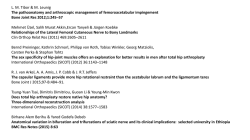
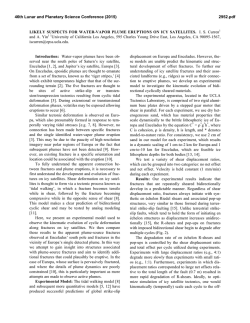
![Download [ PDF ] - journal of evolution of medical and dental sciences](http://s2.esdocs.com/store/data/000508090_1-a9a933ff37237d5430f2b15a1b23af4a-250x500.png)
